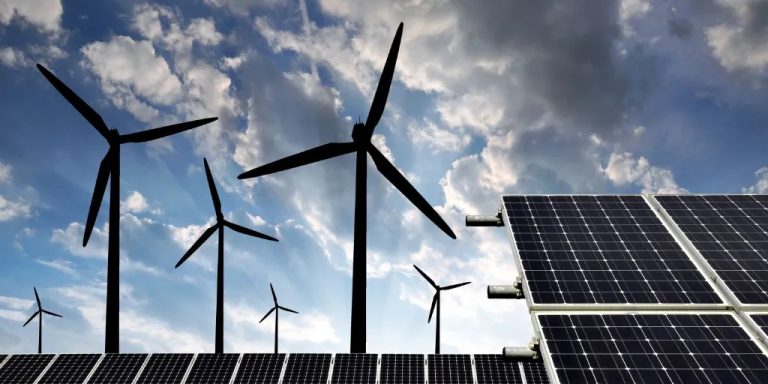from CFACT
Paul Driessen
Environmentalists insist they love the “little people” – until they get in their way, ask inconvenient questions or try to block renewable energy projects aimed at saving the planet from “man-made climate catastrophe”.
Then the little guy will learn that environmentalists are actually working with wind and solar companies, utility companies, financial giants, politicians and bureaucrats—the climate industrial complex. If it is blocked, farmers, rural communities and American Indian groups could face long and costly battles. But they often prevailed.
Energy analyst and journalist Robert Bryce reports that the little guys have rejected or restricted 735 U.S. wind and solar projects since 2015, including 58 solar and 35 wind projects so far this year. Transmission lines, grid-scale batteries and other plans also face growing headwinds.
Rural Americans do not want these large-scale facilities to disrupt their traditional way of life, damage property values, raise electricity prices, destroy important farmland and habitat, damage the landscape, kill birds, bats and other wildlife, and cause severe fires and Toxic gas risks arise from lithium-ion batteries.
They don't want their countryside to be littered with landfills filled with billions of tonnes of broken and obsolete solar panels, wind turbine blades and other rubbish.
The number and scale of proposed projects is daunting, and many more are needed to realize America’s dream of moving away from fossil fuels and towards an all-electric energy, transportation and industrial system.
The Lava Ridge Wind project, which would have installed 400 giant turbines on about 200,000 acres of federal land in Idaho, was scaled back after failing to reduce local and state opposition. It covers an area of 310 square miles, more than 4.5 times the area of the District of Columbia. Most of its output will go to California, which already imports nearly a third of its electricity.
The Koshkonong solar project near Christiana, Wisconsin, will cover 6,400 acres (10 square miles) and install a 667-MWh battery storage system near an elementary school.
The Biden-Harris administration's 30,000-megawatt offshore wind energy plan translates into 2,500 12-megawatt turbines 850 feet above the waves. But if the wind blows, all those turbines won't be able to provide enough power (31,541 megawatts) to the state during the hot summer months.
The state plans to spend $2 billion to purchase 24,000 MWh of backup batteries for use on days when there is no wind or sunshine, which will provide the state with power for just 45 minutes. Sufficient batteries would cost trillions of dollars.
Each offshore blade is 350 feet long and weighs 140,000 pounds; 25,000 turbines means nearly 500 miles of blades weighing more than 1 billion pounds. Imagine the cleanup and landfill costs after a major hurricane.
However, a 2020 report from Princeton University called for a massive expansion of U.S. wind and solar power capacity to combat climate change and rebuild the United States.
However, as Bryce points out, those plans would require solar projects covering the combined acreage of Massachusetts, Rhode Island and Connecticut, and wind power covering the acreage of Illinois, Indiana, Kentucky, Ohio and Tennessee facility.
That doesn’t include the wind and solar power needed to charge grid-scale backup batteries to store enough power to power the U.S. for a day or week of windless, sunless days.
Other projects are equally large, expensive and exotic.
Summit Carbon Solutions wants to build a pipeline to transport carbon dioxide from 57 ethanol plants in five states and inject the carbon dioxide into geological formations beneath North Dakota. The company can't guarantee that the pressurized gas will stay underground and not suddenly and violently erupt, quickly displacing breathable air and killing wildlife and humans – as it did in Cameroon's natural carbon dioxide reservoir at Lake Nyos in 1986 That way.
Why are you trying to end local land use controls, seize our property through eminent domain, and destroy local and minority small businesses to build these huge projects?
• If China and India alone emit 38% of the world's greenhouse gases (compared to 11% for the US) and are building coal-fired power plants, destroying our wild and agricultural areas, killing wildlife and lowering our living standards What are the benefits?
Proud, principled resistance is essential if citizens are to defend their jobs, land, living standards and freedoms.
• Paul DriesThe cumulative impact of these wind, solar, battery, transmission line and other projects on land, wildlife, homes, budgets and human health will be incalculable.
In addition to cost, construction and raw material demands, home, community and regional power grids must expand and upgrade to cope with ballooning electricity demand and the surges and dips associated with unpredictable, weather-dependent wind and solar power.
This has nothing to do with those in the climate industry complex who want to celebrate their “critical role” in driving America's “renewable energy transition,” meeting arbitrary greenhouse gas reduction targets and preventing “climate catastrophe.”
Property rights advocate Tom DeWeese said concerned citizens can fight back by asking tough questions about these policies and programs.
For example:
• What benefits does our community receive from our existing solar and wind farms, taxpayer subsidies and the increased rates we already have to pay?
This article originally appeared in The Washington Times
Relevant
